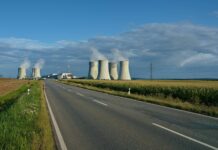Nuclear fusion, the process that powers the sun, is making significant strides in energy output at one of the UK’s oldest fusion research facilities. Today (9 February), the Joint European Torus (JET) in Oxfordshire surpassed its previous record for the longest sustained fusion reaction, increasing from 5 seconds to 5.2 seconds. What does this mean for the future of nuclear fusion and can we expect to see it as commercial energy source any time soon?
A quick summary of nuclear fusion
Unlike nuclear fission, the process currently used in nuclear power stations, fusion involves the merging of two molecules under extreme heat and pressure. When these molecules fuse, their nuclei combine, releasing a surplus of energy. This excess energy, far greater than that produced by fission, is the key to unlocking fusion’s potential as a sustainable power source. While fusion doesn’t occur naturally on Earth, scientists are rapidly advancing toward harnessing its immense energy for practical use.
JET sets another nuclear fusion record
The Joint European Torus (JET) is one of the world’s leading facilities for studying nuclear fusion, particularly in the context of magnetic fusion energy. A collaborative project involving numerous European countries, its primary goal is to achieve controlled nuclear fusion reactions.
Operating since 1983, JET temporarily became the hottest point in the solar system during its operations, with temperatures soaring to a staggering 150 million degrees Celsius. However, one of its biggest moments came in its final tests conducted in late 2023.
Previously, the reactor’s record stood at sustaining a fusion reaction for 5 seconds in 2021, yielding 59 megajoules of heat energy. In its final experiment before shutting down, JET surpassed this milestone by prolonging the reaction to 5.2 seconds while reaching 69 megajoules of output, utilising just 0.2 milligrams of fuel.
Now, the machine will be dismantled over the next 16 years. During this process, scientists will continue to extract key information, such as where the liner of the reactor has deteriorated or where valuable resources such as tritium – worth £30,000 a gram – may have been embedded and can be reclaimed.
“It’s great that it’s gone out with a little flourish,” says Juan Matthews, Visiting Professor in Nuclear Energy Technology at The University of Manchester’s Dalton Nuclear Institute. “It’s got a noble history. It’s served its time and they’re going to squeeze a bit more information out of it during its decommissioning period as well. So it’s not something to be sad about; it’s something to be celebrated.”
What’s next for nuclear?
Looking ahead, the torch of fusion research passes to ITER, the International Thermonuclear Experimental Reactor, in France, set to commence its initial experiments in 2025. With ambitions to scale up energy output to 500 megawatts, ITER aims to replicate and surpass the achievements of its predecessor on a grander scale.
The UK plans to follow suit, after announcing in October 2022 that it has selected a site for a commercial nuclear fusion reactor. West Burton A power station in Nottinghamshire will be the UK’s and potentially the world’s, first commercial prototype according to the BBC.
Is nuclear fusion a viable commercial energy source?
For large energy-consuming companies like those in the cement and heavy industry sectors, nuclear fusion presents the potential for enhanced reliability and sustainability in energy production at reduced expenses. Compared to nuclear power, fusion entails only 25% of the cost of nuclear fission. Fusion also operates on significantly smaller fuel quantities. A 1 Gigawatt fusion power station requires less than one tonne of fuel for a year of operation.
But, there’s still a significant gap in between the current state of nuclear fusion and when it may be viable on a commercial level. Construction times for nuclear fusion sites can span anywhere from 5 to 10 years, so even the UK’s West Burton A won’t be online for a significant amount of time.
Even with slow build times, nuclear fusion still offers the hope of efficient energy production on a grand scale. Be sure to watch this space as we continue to follow along on the Energy Advice Hub.














